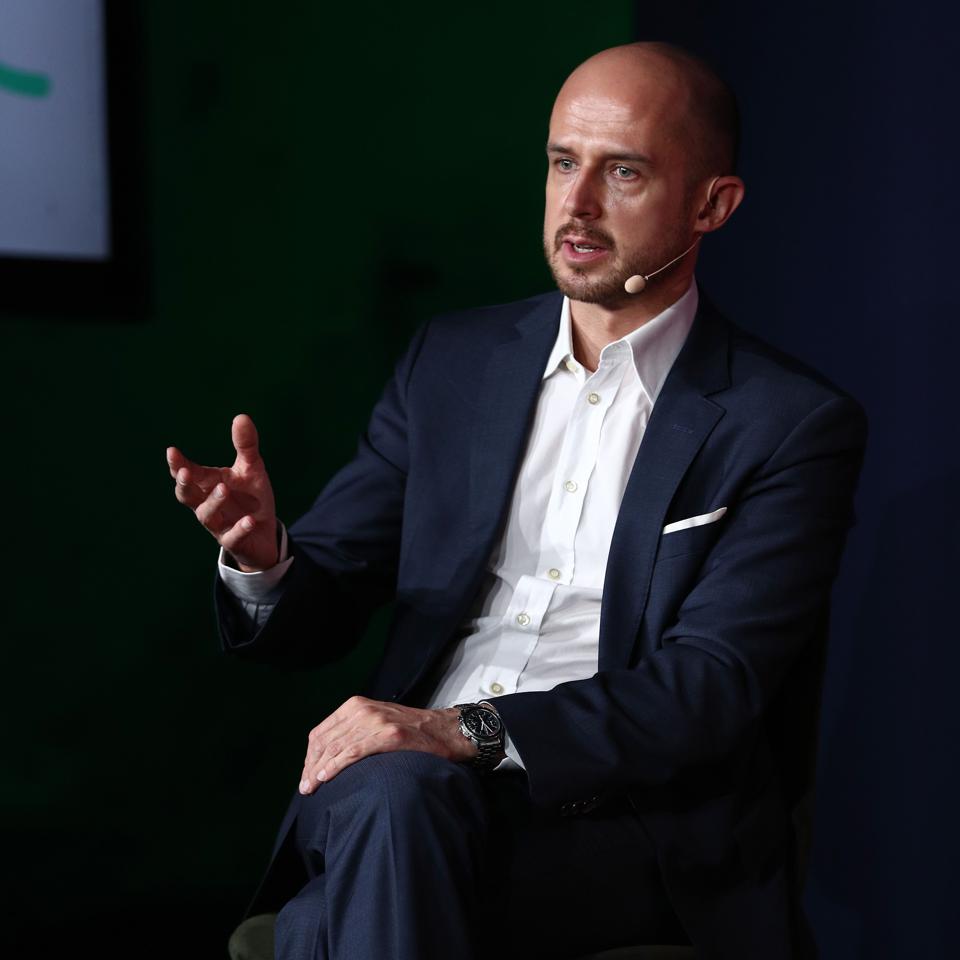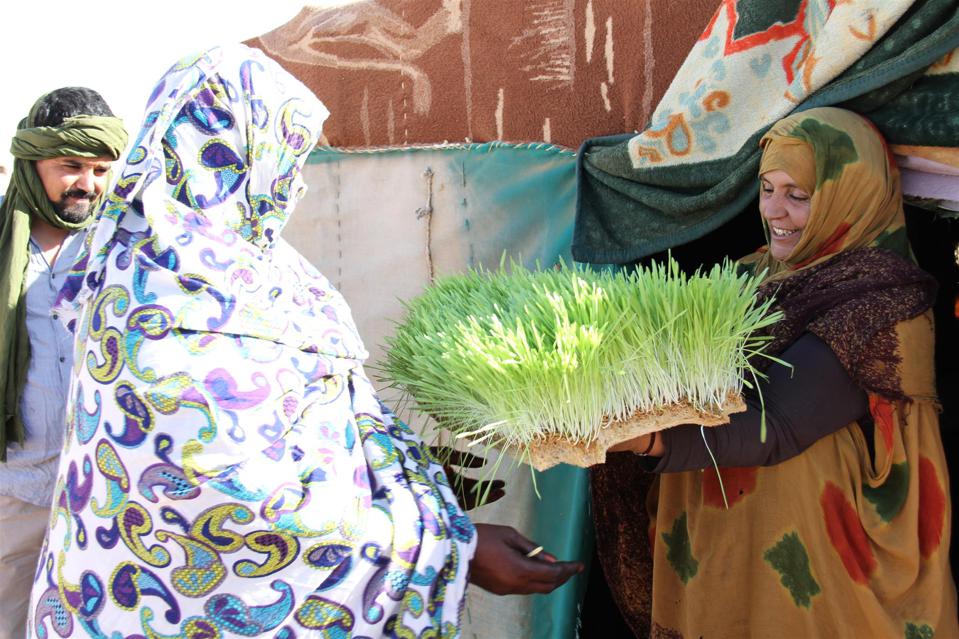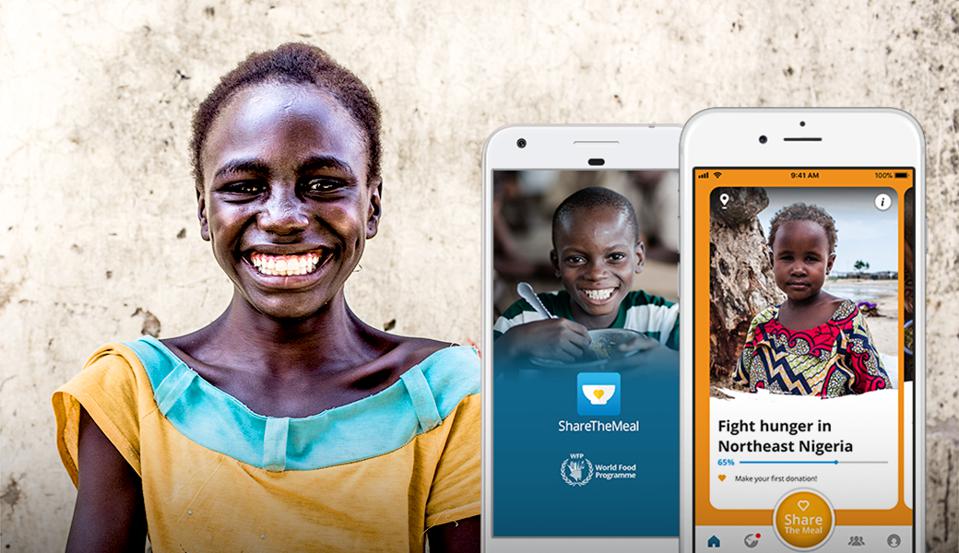Iris Scans, Hydroponics And Blockchain: How Innovation Is Helping Fight Global Hunger
Read the article at Forbes.com
David Vetter, senior contributor at Forbes, met with Bernhard Kowatsch, head of the WFP Innovation Accelerator, at the Green Tech Festival in Berlin to talk about how innovation is working towards a world with Zero Hunger, exacerbated by climate change and COVID-19. This in depth article looks at both high tech solutions like blockchain, digital id, artificial intelligence, and successful lower tech approaches like hydroponics to support smallholder farmers and grain storage to reduce post-harvest losses.
---
Almost 700 million people in the world don’t have enough food to eat. Climate change and human conflict are making the problem worse: in the last five years, some 60 million more people have gone hungry. One in three people on Earth suffer some form of malnutrition.
In a race against time, innovators are joining forces to alleviate this suffering in ingenious and unexpected ways. From utilizing iris scanning technology to pay for food, to engineering low-tech hydroponics kits that can work in the Sahara desert, one team at the United Nations’ World Food Programme (WFP) has been pooling ideas to come up with ways to put food on people’s plates, as well as giving them the resources they need to become self-sufficient.

“We believe people have the ability to innovate their way out of hunger,” says Bernhard Kowatsch, head of the WFP’s Innovation Accelerator. “In fact, we’ve already developed innovations that have lifted hundreds of thousands of people out of hunger, and the solutions are really diverse. But we need to do more, and we need more ideas.”
Kowatsch is speaking to Forbes.com from the Greentech Festival in Berlin, an annual green technology trade fair which went ahead this year despite the continuing coronavirus pandemic. The festival has brought together a diverse crowd of innovators to showcase the latest in climate-saving applied science and knowhow. This year the festival awarded its Lifetime Achievement Award to veteran ethologist and environmentalist Jane Goodall, who in her own right has formulated programs to address poverty directly.
Looking at long-term trends, Kowatsch explains, about a billion people were going in hungry in 1990. “Around five years ago that total was down to around 630 million, so that was progress. But since then that number has crept back up to 690 million,” he says.
In the face of this challenge, the Innovation Accelerator brings together people from the developing world, as well as more advanced economies, to brainstorm and build systems to help feed those most in need.
“The innovative startups we work with from developing countries oftentimes need help in how to develop a technology or a sustainable business model because they may not have access to mentors to get it right,” Kowatsch says. “Meanwhile, a lot of the innovators from developed countries have no idea what conditions are like in a refugee camp.”
To solve these dual problems, the Accelerator runs innovation bootcamps, which are able to call on as many as 18,000 World Food Programme staff from 83 countries, as well as external agencies, to lend their expertise.
“This enables those innovators to develop their innovations with the people on the ground, to make sure these ideas really address the needs of the people,” Kowatsch explains.

Kowatsch points out that, contrary to popular myth, world hunger isn’t the result of there being too many people: indeed, we produce more than enough food to go around. Rather, the problem is that food is distributed unequally. Much of the rise in food insecurity is accounted for by global instability, and that goes hand in hand with climate change, which is causing hunger in both direct and indirect ways.
“In the short term, one of the ways climate change affects us is extreme events—what we call climate shocks,” Kowatsch explains. Climate shocks are everything from wildfires and droughts to floods, which not only cause the widespread displacement of people, but also destroy crops and whole food production industries. These require immediate, large-scale humanitarian food assistance to save lives.
But the second aspect of climate change causing hunger is what Kowatsch calls climate stresses. “These don’t so much make the headlines,” he says. “They include rising salinity in soils and groundwater [where rising sea levels ruin agricultural land], the rising incidence of pests, and heat stress to crops and livestock.”
The third area is the “risk multiplier” effect of climate change: “This is seen in the poorest and most food insecure countries, where climate factors can intensify social tensions” Kowatsch says, explaining that the effects of climate change amplify existing inequalities when it comes to access to resources such as water and land.
But unlike some of the effects of climate change, which might affect us only gradually, hunger couldn’t be more immediate. According to The Lancet, some 3.5 million children die from malnutrition each year. People who don’t have enough food to eat cannot wait for industrialized nations to curb their emissions to bring climate change under control: they are starving now.
Kowatsch’s Innovation Accelerator is a specialized unit of the United Nations’ World Food Programme, intended to develop practical ideas to help achieve the Programme’s Zero Hunger goal. So far the Accelerator has scaled up 11 different innovations that the UN says are helping 1.4 million people around the world—and that reach is growing.
Some of those innovations, Kowatsch says, are surprisingly low tech, like selling airtight silos—little more than a large plastic bin with a sealable lid—to farmers. “Typically smallholder farmers have 40-50% post-harvest loss—so they’re losing 50% of their income because they’re unable to store the food,” Kowatsch says. Those losses come from moisture, pests and mold getting into the harvested crops. Following a half-day training programme formulated by the Accelerator, farmers can buy locally produced silos and bags, which reduce their losses by 98%.
“Being able to hold on to their produce until the lean season arrives and prices rise means smallholder farmers are able to increase their income as much as three times, improving food security,” Kowatsch says, adding that so far, 700,000 silos have been sold in eight countries, including the poorest regions of Uganda, Burkina Faso and Tanzania.

But in some regions, growing any food at all is a challenge: the bone-dry conditions of the Western Sahara desert in Algeria, for example, make it all but impossible to grow crops conventionally. But H2Grow, another Accelerator initiative, is making it possible for Sahrawi refugees to farm plants with minimal moisture and without soil, using simple hydroponic units to produce crops using 90% less water than conventional farming. “Hydroponics can be used in a wide range of situations, from refugee camps to urban settings where typically you would not have access to nutritious food,” Kowatsch says, adding that H2Grow has now rolled out to seven countries. In the case of the Sahrawi people, the systems are being used to grow barley to feed goats, which in turn produce milk and meat for the community. The system is proving so effective, refugees are able to sell some of the excess fodder, creating a source of revenue.
Elsewhere, another Accelerator innovation is using blockchain technology to enable Syrian refugees to make secure purchases of food and goods in refugee camps using only their iris, eliminating the need for wallets or banks. Under the Building Blocks project, cash value provided by the WFP is stored to an “account” maintained on the blockchain, which is an encrypted ledger of records distributed across the internet. Each “account” is tied to one individual’s biometric data—in the case of the Syrian refugees, an image of their iris.
“They can authenticate their transaction with an iris scan,” Kowatsch explains. “It’s like a virtual wallet; a bank account that you have on the blockchain, which makes it very secure.” This helps humanitarian bodies and charities to work together more closely. “We used blockchain because we wanted to make humanitarian assistance more effective,” Kowatsch says. “It enables agencies like the UN to cooperate with other humanitarian groups, because it’s a distributed system of ownership. And as an individual, if you donate money to the World Food Programme, you can be sure that that money is used just where it was intended for.”
In the last few months, in the midst of the coronavirus pandemic, Building Blocks has also been rolled out to refugee camps housing Rohingya refugees in Bangladesh—though in this instance, to maintain social distancing, the identification system used is a QR code printed on a card, enabling the holder to maintain distance from market staff.
The speed and adaptability of this rollout speaks to the remarkable versatility of the innovations that the Accelerator has developed. This, Kowatsch says, is part of what has attracted entrepreneurs and innovators to the program: “Anyone with an idea can come to us, and it’s inspiring for them because they see it’s possible to create startups that are sustainable and actually help people.”

But far from being the sole preserve of an elite group of technologically-minded pioneers, Kowatsch says the core message of his unit is that everyone can make a difference. In 2015 he co-founded an app, ShareTheMeal, which has seen three million people around the world provide 83 million meals for children. The project now has a new goal: providing 800 million meals over the next five years.
“The point is that there are different layers to helping,” Kowatsch says. “At the most basic layer, it costs 80 cents to feed a child for a day. So anyone can contribute towards ending hunger.”
Technological solutions on their own are unlikely to prevent climate change or feed everyone who is hungry. But it seems that combining the human flair for ingenuity and cooperation with our capacity for compassion can be a potent recipe for change.


